If you’re on the keto diet and need some help staying full, we’ve compiled aclean keto food list that will keep your cravings at bay. This list includes both ketogenic-approved snacks and healthy meals that’ll make it easy to stick to this eating plan for life. From dairy-free ice cream to meatless burgers, these tips will ensure you never feel deprived again!
What Is Clean Keto Anyway?
The ketogenic diet involves eating very low amounts of carbohydrates, moderate amounts of protein, and high amounts of fat. Eating this way puts your body into a metabolic state called ketosis, where it burns fat for fuel instead of glucose. “Clean Keto” refers to foods that are full of healthy fats, have minimal net carbs (and, as a result, have little impact on your blood sugar levels), and are nutrient-dense. Clean keto does not include any processed foods or unhealthy fats like trans or hydrogenated fats.
What’s So Great About Clean Keto?
While the classic ketogenic diet was originally created as a treatment for certain kinds of childhood epilepsy, research has recently shown that following a clean keto diet can positively impact other conditions.
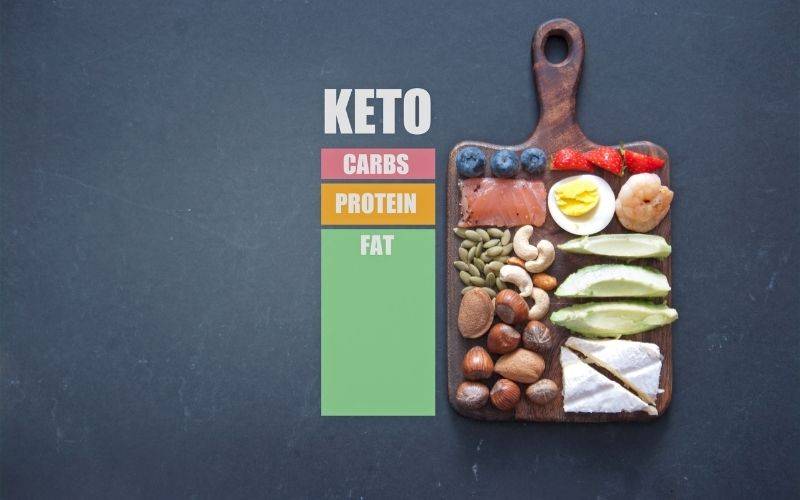
Some of the benefits include:
It significantly reduced appetite and craving for junk food, making it easier to stick to your weight loss goals. More energy throughout the day thanks to high amounts of healthy fats and moderate amounts of protein.
Improved heart health due to higher levels of HDL (good) cholesterol and lower levels of LDL (bad) cholesterol. Reduced inflammation throughout the body, which can help with pain management and certain skin conditions. Fewer insulin spikes, which further helps with managing appetite and cravings.
How To Follow A Clean Keto Diet… The Most Important Rules!
1. Focus on high-quality fat, moderate protein, and very little net carbs
When in doubt, always choose foods that are higher in healthy fats (coconut oil, avocados, grass-fed butter, or ghee) over those that are full of protein with no fat. Carbs should only come from non-starchy vegetables like leafy greens and cruciferous veggies, both of which can be consumed in abundance while still keeping your carb intake low enough to get into ketosis.
You can find on Bariatric Station comprehensive guides about ketogenic diets with their benefits, the types of keto and common mistakes when following them. Make sure to check them out.
2. Be wary of “keto” snacks containing added sugar or other unhealthy ingredients
While many people find that eating a moderate amount of net carbs can help manage cravings, some choose to keep their total carb intake very low. This means you have to pay extra attention to ingredients lists.
Many keto-friendly snacks are full of added sugar! And even if sugar isn’t listed on the label—an ingredient called “maltitol” is often used as a replacement. Maltitol will raise your blood sugar just like regular sugar does, so it’s important to avoid this sneaky sweetener at all costs. Watch out for any product that has more than 5 grams of net carbs per serving, and make sure there aren’t any unnecessary ingredients added in.
3. Don’t cut fats or protein, but do
These ingredients are fine in moderation, but if you see several on the list of ingredients, it’s best to avoid buying or eating them. 3. Keep your daily carbs below 20-50 grams per day (net carbs). The fewer net carbs you eat, the better your keto diet will work.
4. Choose dairy-free options whenever possible
While cheese and full-fat yogurt can be part of a healthy ketogenic diet, they’re not exactly friendly to those who are lactose intolerant or sensitive to casein. Meanwhile, there are plenty of delicious dairy-free substitutes that will allow you to enjoy all your favorite meals without getting kicked out of ketosis.
5. Don’t be afraid to “cheat” on occasion
Sure, clean keto is better than the Standard American Diet (SAD), but that doesn’t mean you can never have a slice of pizza or some ice cream. This isn’t about the following keto “perfectly” 100 percent of the time—it’s more about choosing this way of eating most of the time.
Clean Keto Food List
Below is a list of clean keto foods that you can enjoy for the rest of your life (not just while on the keto diet). This isn’t an exhaustive list, but if you stick to these guidelines most of the time, it will include most of what you need.
Protein
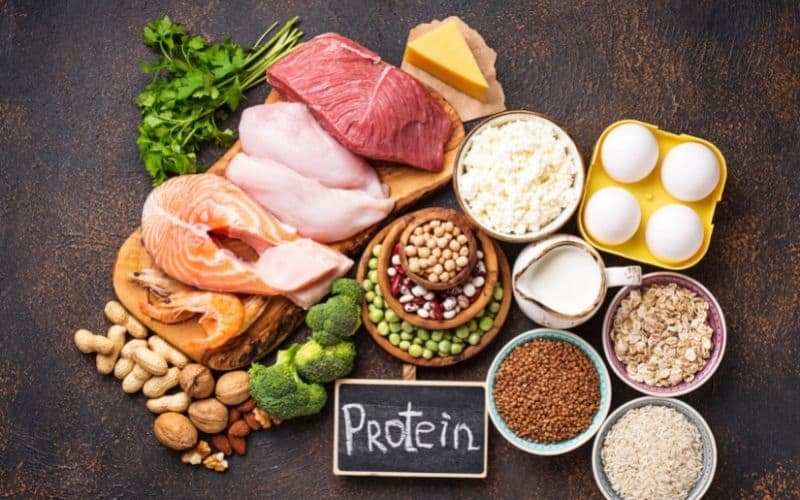
For those following a keto diet, there aren’t too many rules when it comes to meats. You can have fatty cuts of grass-fed or pasture-raised meat with wild-caught seafood for the best nutrient-dense proteins on this type of plan! Just be careful about carbs found in shellfish like mussels and clams since they may contain more than just what you expect them to look like under that slimy exterior
With so many different types of proteins, it’s hard to decide which one is best for you. But if your diet can’t provide enough quality animal sources, try adding in some whey protein concentrate! As an added bonus, this will help increase amino acids levels while also promoting healthy skin bones joints–just what we need on our side during these cold winter months ahead!
Keto Protein List:
- Wild-caught seafood (especially fatty fish like salmon or tuna)
- Grass-fed meats (like steak, ribs, chicken thighs)
- Organ meats are okay to eat on the keto diet. Still, they are generally not considered very nutritious since they contain mostly fat. However, the liver is actually a high-protein food that’s also extremely nutritious even though it has almost no carbohydrates. It’s packed with vitamins A, B, C, D & E, as well as minerals like selenium and zinc and amino acids that your body needs for recovery
- Eggs: If you’re still concerned about eating eggs on keto due to their high cholesterol content, don’t be! Eating whole eggs doesn’t affect your cardiovascular system the way you might think it does. In fact, most of the cholesterol in our diets comes from plants, not animals—though most people who have high cholesterol levels are eating more animal foods than they realize. So if you’re worried about getting enough protein on the keto diet, don’t sweat it!
- Whey protein concentrate is a high-protein food that can increase daily protein intake, especially for losing weight. Whey protein concentrate contains more branched-chain amino acids (BCAAs) than whey protein isolate and is lower in lactose, making it a good option for those interested in upping their daily protein intake but are lactose intolerant or sensitive to casein (the protein found in dairy products)
You should avoid these proteins on a keto diet:
- Any food made with processed soy, including tofu. Foods made with non-organic soy are more likely to be genetically modified (GMO), leading to negative health consequences.
- Packaged foods with low-fat, high-sugar soy “products,” including soy protein powder.
More: 6 BEST ORGANIC PROTEIN POWDERS
Vegetables
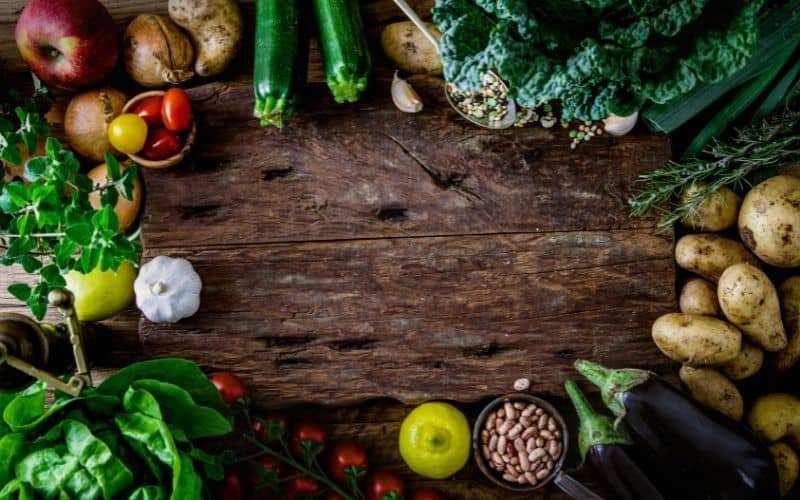
The keto diet is a high-fat, low-carb diet, so the majority of your daily carbs should come from vegetables. Steer clear of starchy vegetables, such as potatoes and corn. Instead, look for more fibrous options from the different colors of the rainbow! Vegetables are loaded with vitamins, minerals, antioxidants, etc., so you’ll be satisfied on a cellular level while still meeting your daily fat and carb goals
Some people on the keto diet try to grow their vegetables in butter or oil to get more fat into their diet. We think that’s fine if it helps you meet your goals.
Keto Vegetables List:
- Artichoke
- Asparagus
- Beet greens
- Bell pepper
- Broccoli
- Brussels sprouts
- Cauliflower
- Cucumber
- Collard greens
- Eggplant
- Kale
- Mushrooms
- Olives
- Okra
- Spinach
- Tomato
- Watercress
- Zucchini
You should avoid these vegetables on a keto diet:
Even though they’re low in carbohydrates, green beans, peas, carrots, and sweet potatoes should be avoided since they have a high sugar content. These vegetables are healthy in general but just not keto-friendly.
More: BEST WAIST TRAINER FOR WOMEN
Fruits
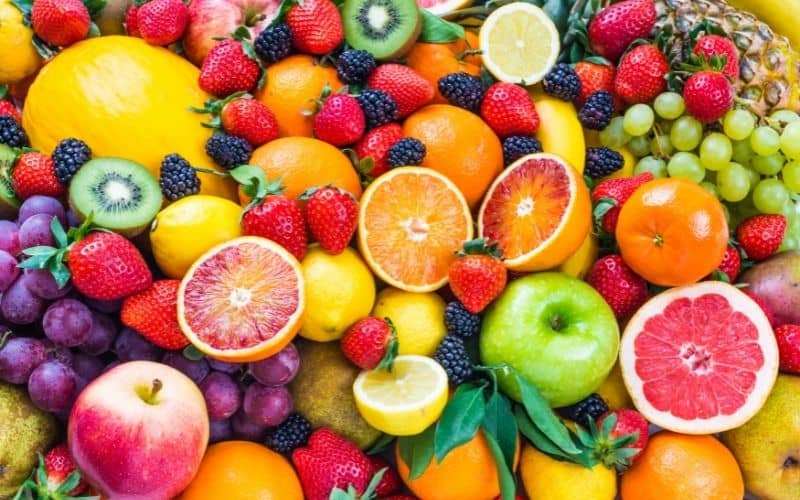
A lot of people claim they feel better when they eat fruit. However, the truth is that the fructose in most fruit can turn into body fat in the liver when consumed in high amounts. Additionally, when fruit is eaten with other foods that are high in carbohydrates or used as a sweetener for another food, the blood sugar spikes. This leads to cravings later in the day.
Fruits are all full of fiber and antioxidants, so they’re definitely healthy for us humans but just not keto-friendly.
Keto Fruits List:
- Avocado
- Blackberries
- Blueberries
- Coconut (fresh) – Coconut oil can be used to cook anything but make sure there’s no added sugar!
- Lemon/lime juice – Lemon/lime juice is usually fine since most commercially available varieties are free from added sugars. Just make sure you don’t drink the pulp since it’s full of fiber!
- Watermelon
You should avoid these fruits on a keto diet:
Apples, bananas, oranges, pineapples, grapes, mangoes, peaches, pears, and plums are all high in sugar. You should avoid these fruits if you’re trying to lose weight or get into ketosis. All dried fruits contain added sugars which make them not keto-friendly.
Nuts and Seeds

Nuts are usually roasted, which means they’re probably covered with oil to prevent them from sticking together. This oil is probably not the healthy kind. If you’re going to eat nuts on keto, make sure they’re raw.
Nuts are very high in fat and should be eaten in moderation if you’re trying to lose weight. They can also skew your macronutrients for the day since they provide a lot of calories with not much protein or fiber.
Keto Nuts List:
- Almonds
- Brazil nuts
- Macadamia nuts
- Pistachios
- Hazelnuts
- Walnuts
You should avoid these nuts on a keto diet:
- Cashews
- Pecans
- Pine nuts
- Sunflower seeds
A lot of people claim they’re okay. Still, most commercially available seeds are roasted with oil to prevent them from sticking together. This is definitely not keto-friendly!
You should consume moderately these seeds on a keto diet:
- Chia Seeds
- Flax Seeds
- Poppy Seeds
- Sesame Seeds
- Sunflower Seeds
Seeds are very high in antioxidants and protein, which makes them a healthy addition to your diet. Just make sure you aren’t eating too many because they’re also really high in calories and fat!
More: THE BEST ROWING MACHINES
Dairy
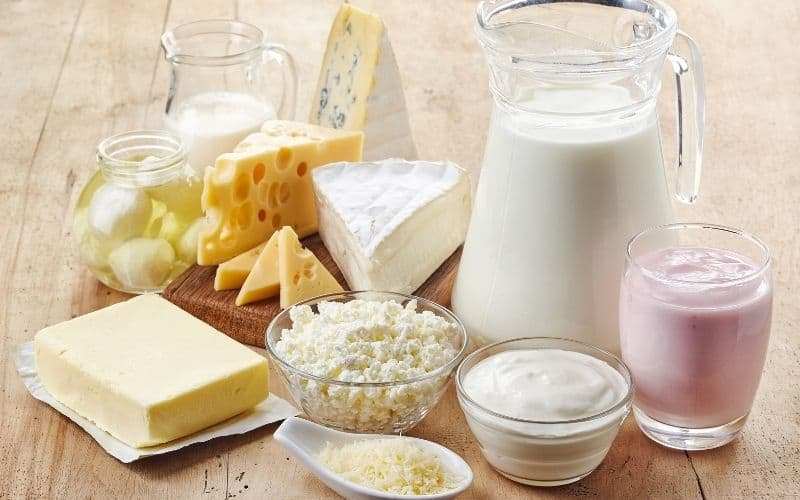
Most dairy products contain lactose, a form of sugar that should be avoided on a keto diet. If you can tolerate dairy, stick to 1% or lower-fat varieties since the majority of the carbohydrates come from the milk itself. Most cheeses are low in carbs, so feel free to add them to your meals or eat them as snacks.
Keto Dairy List:
- Grass-fed raw butter
- Dairy milk (1% or skim)
- Cottage cheese (low-fat)
- Greek yogurt
You should avoid these dairy products on a keto diet:
- Whole Milk
- Reduced-Fat Cream Cheese
- Cottage cheese contains quite a bit of lactose, so it’s not keto-friendly.
- Cheddar cheese
- Goat Cheese
- Mozzarella cheese
- Swiss cheese
Dairy products are high in protein and essential vitamins, making them a healthy addition to your keto diet. Make sure you choose low-carb dairy products, though!
More: BEST CORK YOGA MAT
Fats And Oils
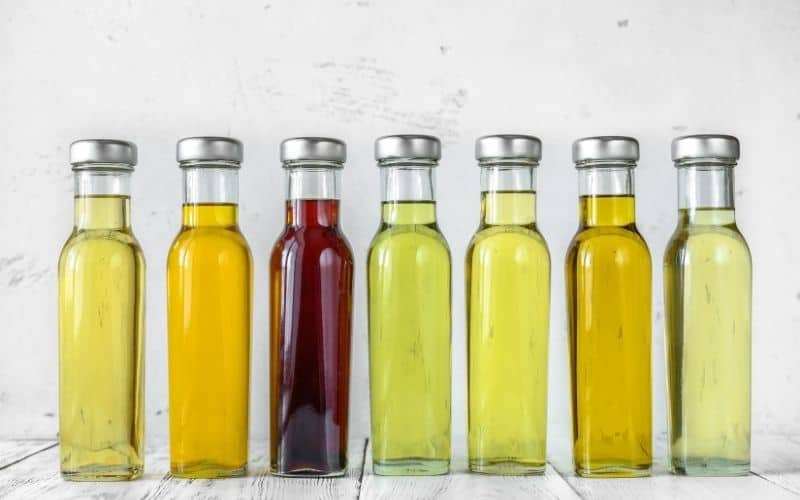
Fats are very important on keto since they provide us with energy and also make our food taste awesome! There are many different types of fats; some are healthy while others aren’t. Make sure you’re eating the right kind of fats to stay full, healthy, and awesome!
Keto Fats List:
- Avocado oil
- Cacao butter
- Coconut oil
- Cod liver oil
- Extra virgin olive oil
- Extra virgin sesame oil
You should avoid these fats on a keto diet:
- Vegetable oils (canola, peanut, corn)
These are often high in omega-6 fatty acids, which is something you definitely want to avoid.
- Trans fats found in margarine and many processed foods
Margarine especially contains a lot of trans fat that’s been shown to cause heart disease. These hydrogenated fats have been linked to a higher risk of obesity and diabetes, so they’re best avoided. If you can’t give up your toast with margarine on it, go for the real deal instead!
Snacks/Desserts
Everyone needs a treat every now and then! Instead of reaching for that oreo cookie, why not try these snacks instead?
Keto Desserts/Snacks List:
- Cheese crisps
- Coconut oil chocolate
- Dark Cocoa Nibs
- Macadamia nuts
- Keto ice cream
- Keto smoothie
- Keto cereal
These are all great for your ketogenic diet. You can add them to pretty much anything, even plain ol’ veggies! They’re especially good when you need something spicy to keep you going.
You should avoid these snacks on a keto diet:
- Cereal bars
- Chips and crackers
- High-sugar fruits
- Sweetened yogurt
Most store-bought cereal bars are full of sugar and carbs, so they’re definitely not keto-friendly. They also have very little fat in them, so they won’t fill you up as much as other snacks will!
Try making your own sugar free low-carb granola instead. It’s easy to make, and it tastes great, too! You can even add dried fruit for extra sweetness and flavor if you want. Trail mix is another good option.
There are so many different keto recipes out there, so feel free to experiment!
More: THE SOFTEST WOMEN’S PAJAMAS
Sweeteners

Sugar is one of the worst things you can eat on a keto diet. It spikes insulin levels and prevents your body from burning fat. If you’re craving something sweet, try using stevia or another natural sugar replacement instead.
These are all great for your ketogenic diet! They’ll give you that sweetness you crave without making you gain unnecessary weight. Just remember: everything in moderation!
Keto Sweeteners List:
- Monk fruit extract
- Non-GMO erythritol
- Stevia
You should avoid these sweeteners on a keto diet:
- All artificial sweeteners
They offer no nutritional value, so they’re basically empty calories. Artificial sweeteners are also known for causing digestive issues, which are the last thing you want on a keto diet! Try natural sources of sugar instead.
More: 5 BEST BABY FOOD MAKERS
Drinks

Everyone needs a nice cold drink every once in a while!
Keto Drinks List:
- Black coffee
- Bone broth
- Green tea
- Water (duh)
These are all great for your ketogenic diet. Coffee and green tea have been shown to speed up the fat loss, and they taste delicious, too!
Bone broth can be added to soups or stews for extra flavor and nutrients; it’s also very easy to make. Just combine leftover bones from your dinner with some veggies and water and cook overnight. Voila!
Low-carb dehydrated soup is ready the next day! You can even use bone broth as a coffee creamer or drink it on its own.
You should avoid these drinks on a keto diet:
- Alcohol
- Sweet drinks
Most alcoholic drinks are carb and sugar bombs. Even if they’re low-carb, high-alcohol can actually cause more weight gain than other carbs. If you want to avoid the excess calories, you should stay away from them as much as possible on a keto diet!
That about sums up this list! As you can see, eating the ketogenic way is definitely not restrictive if you know what foods to eat. These foods will help you bulk your body and feel great without feeling deprived of all your favorite comfort food.
More: TOP 10 BEST COUNTERTOP WATER FILTER
The Key to Eating Clean Keto
The key to eating keto is to keep it balanced.
Stick to healthy fats, proteins, and low-carb veggies while avoiding dairy products high in fat or sugar (like ice cream) on a keto diet.
Remember: Everything in moderation!
As long as you don’t go overboard on carbs, fruits, vegetables, cheese, nuts/nut butter are all great choices for your ketogenic diet.
Anyone can benefit from the ketogenic diet if they use this list of clean keto foods properly! You don’t have to be overweight or obese to lose weight on this particular plan.
The benefits are truly endless with the right mindset and support system. If you need more help getting started with your ketogenic diet, make sure to sign up for our free email course. It’s the best way to learn about ketosis and weight loss!
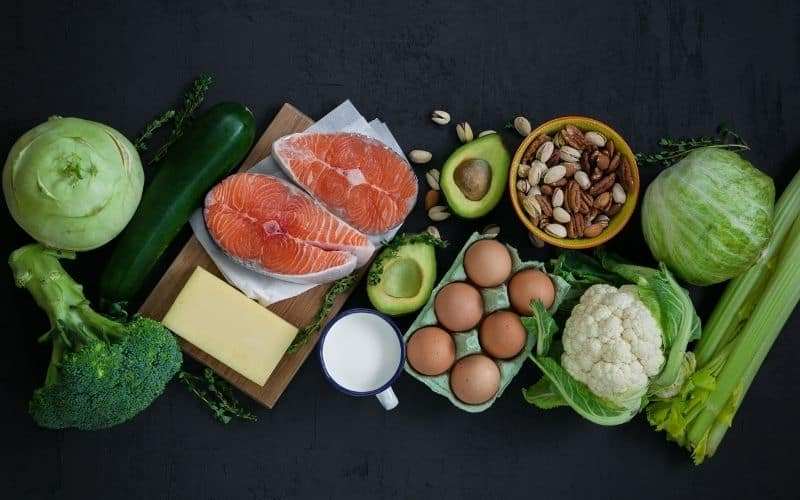
Keto Diet Health Benefits
Weight loss
One of the most important benefits is weight loss. Ketosis has been shown to create a faster weight loss than a low-fat diet. This is partly due to the increased satiety from high-protein foods and because it suppresses appetite since you’re eating fewer carbs.
Glycemic control
The ketogenic diet helps balance blood sugar levels. It reduces the risk for diabetes by improving your sensitivity to insulin (which lowers blood sugar levels). Insulin resistance causes sugar cravings, fatigue, and weight gain—so this benefit is very helpful!
Mental clarity
Keto diets are known for increasing mental focus and energy throughout the day; no more mid-afternoon brain fog or coffee is required with this plan! In addition to the health benefits, you’ll also have tons of energy from being in ketosis. The clean keto foods included in this list will provide a variety of ways to stay full and satisfied. At the same time, they can boost your mental clarity, physical performance, and overall happiness all day long.
Keto Diet is Good for Athletes

Did you know that ultra-distance athletes are using the ketogenic diet to enhance performance? This may be because it helps with “hitting the wall.” Hitting the wall is when an athlete starts running/biking/swimming out of stored glucose (carbs) instead of fat. It’s basically like running out of gas on a car; it means the athlete has run out of fuel for their body to use for energy.
Having enough carbs in your system can help prevent this from happening by providing an almost unlimited supply of fuel. This is especially true if you’re eating low-carb veggies, which are high in fiber and water. This reduces your risk of bonking or “hitting the wall” miles before a finish line!
A Sample Keto Meal Plan
Frequently Asked Questions
What’s a keto diet?
A keto diet is a low-carb, moderate protein, high-fat diet. It was invented in the 1920s as a treatment for epilepsy. Still, it’s also used to lose weight and fight chronic illnesses like diabetes and Alzheimer’s disease.
What do I need to know about carbs?
Carbs are one of the main sources of energy for your body. If you don’t get enough carbs from your daily intake, your body will break down muscle tissue and convert it into glucose instead (gluconeogenesis). That way, it doesn’t have to go through the trouble of using ketones from your fat cells, and you’ll lose weight.
What does high-fat mean?
It means that the majority of your daily calories should come from fat! You need to get 20 to 30% of your daily calorie intake from proteins and around 50% from healthy fats like olive oil, coconut oil, and grass-fed butter.
What’s ketosis?
Ketosis is the state in which your body begins using fat cells as its primary source of energy instead of carbohydrates. This switch helps you lose weight, feel less hungry, and increase your energy expenditure. It also decreases pain, reverses insulin resistance, increases athletic performance, reduces acne, and boosts brain function (21).
There are two types of ketosis. One is called nutritional ketosis that comes from eating a ketogenic diet. The other is called dietary ketosis that comes from not eating for a long time or taking HVMN Ketone.
Who can benefit from a low-carb diet?
If you struggle with high blood pressure or diabetes, then you should give this diet a try. Carb restriction has improved insulin sensitivity, lower blood pressure, and managed type 2 diabetes. Other benefits are decreased appetite, weight loss, mental clarity, stabilized hormone levels, increased endurance for athletes, increased energy.
Who should avoid a low-carb diet?
People with certain conditions may need to limit their intake of carbs. If you have kidney disease or Type 1 Diabetes, then you should not follow this diet because it can worsen these conditions. People who are on the CKD (Cyclical Ketogenic Diet) must adhere to specific guidelines set forth by their medical team before starting this eating plan.
What are exogenous ketones?
They’re ketones that you take as supplements. They raise your ketone blood level and help you get into nutritional ketosis faster. These exogenous ketones have been linked to more weight loss, mental clarity, muscle building, increased endurance for athletes, better metabolic health markers, and reduced seizures for epileptic people.
Will I lose weight on a low-carb diet?
Yes! Limiting the number of carbs you eat every day will reduce excess water from being stored as glycogen. Less bloat means fewer pain points. In fact, many people report losing around 10 lbs the first week on a low-carb diet because their body stores about 3 lbs of excess water when they’re on a high-carb diet.
Is it OK to eat anytime on keto?
Breakfast is the most important meal of the day, and you should eat it as soon as possible once you wake up. Research shows that those who skip breakfast tend to overeat later in the day. They usually accumulate more belly fat than those who don’t.
The best keto breakfasts are high-fat and low-carb, like a ketogenic omelet with bacon and veggies or an egg and avocado toast. A bulletproof coffee made with grass-fed butter, coconut oil, MCT oil, or collagen peptides will keep you full for hours.
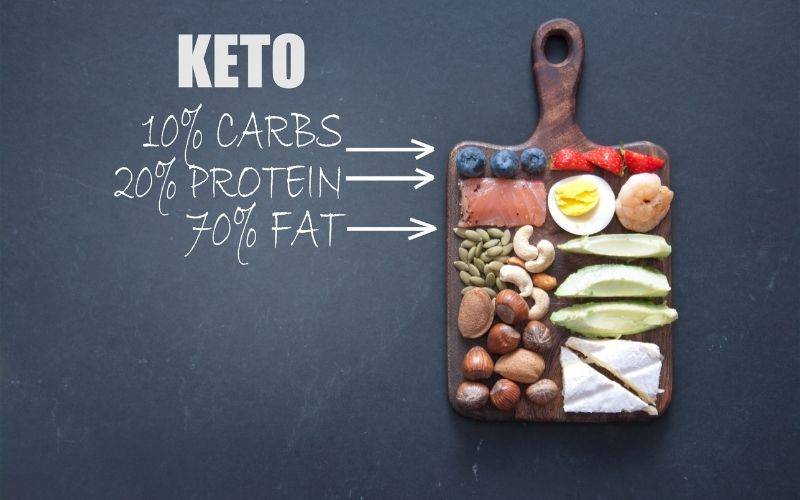
Do I need to count calories on keto?
Although counting calories is not necessary (and it can be counterproductive if your goal is weight loss), you should still try to eat until you’re full on keto. It’s easy to go overboard with carbs, so don’t overdo it!
How do I get enough protein on keto?
Protein is an important macronutrient that helps build muscles and repair tissue after exercise. However, many people go overboard with protein because they associate it with building muscle. The recommended intake for protein is 0.8 grams per pound of lean body mass.
What’s the difference between keto and Atkins?
A low-carb diet isn’t necessarily keto. Not all low-carb diets are created equal! The Atkins Diet includes net carbs from fruits and vegetables, while keto excludes them.
Atkin also allows for some sugary foods like yogurt or fruit during phase 1, making it easier to follow because many people love yogurt! But after finishing phase one, people tend to find it difficult to keep eating those types of carbs, so they transition into a ketogenic diet. A low-carb, high-fat diet with moderate protein intake is the best way to lose weight and manage type 2 diabetes.
Is all fat bad for me?
No! In fact, fat is an integral part of any nutritional plan because it provides plenty of energy for your body without stopping you from feeling full. Fat also makes food taste good! Healthy fats help control inflammation, boost immunity, regulate hormones, lower cholesterol levels, improve heart health, and even prevent depression.
Every kind of fat is not the same, so this “all fat is bad” mentality can be very confusing, especially when a lot of conflicting information is out there on social media. Mono and polyunsaturated fats from avocados, olive oil, nuts, and seeds are good for your health. In contrast, saturated fats from meat, butter, coconut oil, or dairy products should be minimized. Trans fat that you find in processed foods like chips, cookies, snacks, doughnuts, etc., should be completely avoided.
How do I get more energy?
Your body will usually burn the carbs it consumes first to provide you with energy. When you cut back on carbs, your body will start using its fat reserves instead. This is why keto often results in weight loss! Plus, since ketosis gives you more energy, you’ll probably feel motivated to move around even if not exercising.
Why do I have the munchies all the time?
If you feel like munching on nonstop snacks, then it’s a sign that your body is deficient in nutrients that will help curb your appetite. This usually happens when you start this type of eating plan, and your body is still getting used to it. The best way to avoid this is by drinking a lot of water. It may also help to increase the amount of fat you eat so you get fuller faster since healthy fats will keep you satisfied for longer.
What happens if I cheat on keto?
You felt deprived, so you decided to eat a few slices of pizza or have some ice cream during a family get-together. Although it’s OK to treat yourself once in a while, going off keto for too long will only set you up for cravings and more weight gain later. Plus, cheating can be frustrating, especially when following a strict diet. Whenever you lose control over what goes into your mouth, there’s less chance of actually losing weight.
What can mess up ketosis?
Since the keto diet is a low-carb, high-fat way of eating, there are a lot of things that can hinder your body from getting into ketosis, some being more obvious than others. If you don’t eat less than 20 grams of net carbs per day, this will throw off ketosis because your body won’t transition into burning fat instead of glucose.
When exercising, you might also break your state of ketosis by using up your glycogen stores too quickly if you’re not familiar with this type of training. Other common mistakes include drinking excessive amounts of alcohol or too much caffeine, overtraining, and not getting enough sleep.
How long does it take to get back into ketosis?
Some people find it difficult to get back into ketosis, while others experience a smoother transition. Carb restriction can make you healthier. It can help you have better insulin sensitivity, lower blood pressure, and manage your diabetes.
Other good things are that it helps you lose weight, have mental clarity, and have more energy. It can take anywhere from 1-2 weeks for your body to transition into burning fat instead of glucose fully, so if you’re feeling tired after a cheat day, don’t stress. Focus on getting enough sleep and staying hydrated!
Is ketosis bad for you?
There are no real studies that show major risks associated with being in ketosis. Your body has a natural way of dealing with the process, like increasing insulin production to prevent blood sugar spikes. It’s important to stay educated about it and track your results, so you know if something doesn’t feel right. Also, make sure to consult your doctor whenever you start any new diet or exercise routine.
Conclusion
As long as you’re making healthy choices most of the time, you’ll reap all the benefits of this way of eating without having to stress out too much over calories and portion sizes. Just make sure treats are kept to an occasional meal or snack instead of becoming part of your daily routine.
By keeping your overall carb intake low, you’ll minimize insulin production and sugar cravings. This will allow you to burn fat more efficiently as well as release a lot of water weight as you lose those glycogen stores.
Table of Contents
